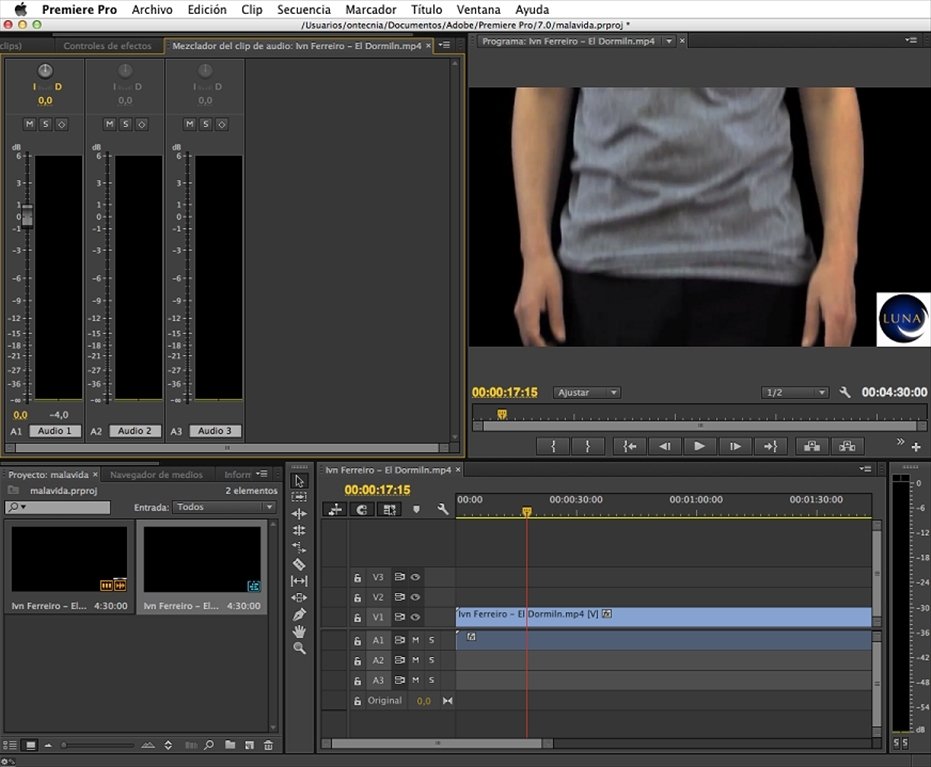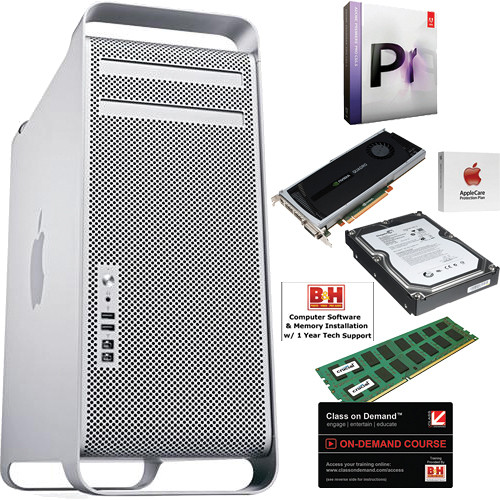Premiere Pro Cs5 For Mac
Jan 14, 2020 💻 Adobe Premiere Pro CC 2020 FREE Download Mac 🍎 How To Download Premiere Pro On Mac For FREE 💻 - Duration: 3:06. Black Wolf Gaming 3,683 views. Download Adobe Premiere Pro CC 2019 for Mac Free. It is full Latest Version setup of Adobe Premiere Pro CC 2019 Premium Pro DMG for Apple Macbook OS X. Brief Overview of Adobe Premiere Pro CC 2019 for Mac OS X. Adobe Premiere Pro CC 2019 is a very handy and impressive application which can be used for real time video editing.
Adobe Premiere Pro CS6 for Mac - NEW & Unopened. Condition is Brand New. Shipped with USPS Priority Mail. Shipping to US only. No international shipping provided. Software is for Mac, and the PN is 65172002. On Sep-19-20 at 20:34:41 PDT, seller added the following information: Please note that this is the genuine product. Premiere Pro is the industry-leading video editing software for film, TV and the web. Creative tools, integration with other apps and services and the power of Adobe Sensei help you craft footage into polished films and videos. With Premiere Rush you can create and edit new projects from any device.
Premiere Pro is a powerful, customizable, nonlinear video editor that lets you edit your way. Import and combine virtually any type of media, from video shot on a phone to raw 5K and higher resolution footage, and then edit it in its native format without wasting time transcoding. The app offers a sleek, highly intuitive user interface, a customizable timeline, numerous editing shortcuts, and robust media management options. And because real-time performance is critical for rich, complex sequences, Premiere Pro delivers the fastest solution in the industry. The Adobe Mercury Playback Engine supports most formats, and you can use multiple GPU cards to accelerate render and export times.
Premiere Pro is part of Adobe Creative Cloud, so you can keep your favorite settings, keyboard shortcuts, and workspace layouts in sync, on any machine, in any edit bay in the world. Plus, you get access to all the latest updates and future releases the moment they’re available. Learn more about Creative Cloud.
See the What’s New page for details. Also see these videos for a general overview and a deep-dive walkthrough of the new features.
Yes, Premiere Pro offers HiDPI support for Mac and Windows computers with Retina display.
Yes, the Mercury Playback Engine brings performance gains to all the graphics cards listed in the Premiere Pro system requirements. GPU acceleration makes the creative process more fluid and speeds up rendering for faster output. Adobe continually evaluates new cards for support. Learn more ›
Premiere Pro has a scalable architecture, so performance scales with the speed of your system. The minimum system requirements for your workflow depend on the type of content you plan to work with. With native 64-bit support, Premiere Pro can take advantage of all the available RAM on your system. For multicore systems, Adobe recommends 4GB or more of RAM per core. On any system, you can see substantial performance gains as you add more RAM. 16GB of RAM is a good baseline if you plan to run multiple applications simultaneously. Plus, the Adobe Mercury Transmit plug-in enables tighter integration with third-party I/O hardware.
Premiere Pro supports a broad range of hardware and software for Mac OS and Windows, so you can choose from a range of workstations and capture cards to build the editing system that meets your needs and budget. Enhance your system with more plug-ins, including many from Adobe After Effects. Premiere Pro works with a variety of third-party hardware, including capture cards and decks. Check third-party hardware compatibility for the most current listing of supported hardware.
With comprehensive video format compatibility, you can work with the formats you want, including natively editing files from the latest tapeless formats without transcoding or rewrapping. Edit all standard- or high-definition formats, from DV and HDV to HD and beyond. Some formats could require extra hardware.
With a free Creative Cloud membership, you can download a trial version of Premiere Pro — and other applications in Creative Cloud. When you upgrade to an All Apps plan, you’ll be able to download the full version of every Creative Cloud application.
If you were prompted to enter your payment details before downloading Premiere Pro, the trial automatically converts to a paid plan after the trial period ends. Otherwise, you can purchase a plan directly from the Creative Cloud website.
Yes, you can download a trial version of Premiere Pro again. If you download a trial version of Premiere Pro by May 15, 2018, you will get the full 7-day trial period.
Note:
In Germany, the trial period is for 14 days (which is the standard trial period).
Yes. If you don't have After Effects installed, you see an error message saying, 'This Motion Graphics
template was created in After Effects. To use this template in Premiere Pro, please install After Effects (trial or license) and retry. Learn more at adobe.com/go/mgt.
To use Motion Graphics templates created in After Effects, you need a trial or licensed version of After Effects installed on your computer. If you are a Creative Cloud subscriber, you already have a license of After Effects. Download it from your Creative Cloud application. If you have a Single-App license of Premiere Pro, a paid license of After Effects is not required, you can install the trial version of After Effects. After your trial has expired, your After Effects Motion Graphics template still works as long as you leave the expired trial installed or install a paid version of After Effects. Do not uninstall the expired trial. For more information, see Motion Graphics templates/Common Questions.
Learn more about purchasing options on the Creative Cloud plans page.
Check out Premiere Pro Learn & Support to get started, with video and step-by-step-tutorials as well as comprehensive product support from Adobe and our knowledgeable community.
You can find web and PDF versions of the Premiere Pro manual on the Premiere Pro Help page.
This page is a companion document to the system requirements for Premiere Pro and After Effects. It provides additional information on system components and considerations for optimal performance.
Want a downloadable version of this document? Click here to download a PDF.
The four key variables for a great video production system are memory, storage, graphics, and your processor.
Memory
Professional video workflows rely on system memory. A good video editing workstation should have at least 32GB of memory— and as much as 128GB.


Storage/hard drives
Fast storage is critical for video production. Use solid-state NVMe or SSD storage. Unless you have a fast RAID array, spinning disks generally do not offer sufficient speed for HD and 4K video production.

The best way to achieve excellent performance (and to keep different types of files organized) is to spread the load between multiple drives. An optimal setup has three drives:
- System drive for OS and applications
- Drive for the media cache
- Media drive (or shared storage)
Only have two drives? Use a fast external drive for your media and Media Cache.
The media cache is where Premiere Pro stores accelerator files, including peak files (.pek) and conformed audio (.cfa). Premiere Pro can make thousands of call to these files every second). For more information, see Set Media Cache preferences.
- NVMe Flash memory drives with Thunderbolt 3.0 connectivity are excellent.
- SSD drives with USB 3.1 connectivity are also good - but have a 4TB limit.
Graphics
The GPU is used for onscreen rendering and export, priority areas for video production. Premiere Pro is engineered to take advantage of the GPU. After Effects is also GPU-optimized.
- Graphics card with at least 4GB of memory (VRAM).
- (Optional) Multiple GPUs, including eGPUs, can be used to speed up rendering and export.
Out-of-date graphics drivers are one of the most common causes of performance issues with video applications. For optimal performance, make sure you have the latest drivers for your GPU, including integrated Intel GPUs. For more information, see GPU and GPU Driver Requirements for Premiere Pro.
Processor/GPU
For CPUs, clock speed matters more for After Effects. Multiple cores have more impact for Premiere Pro. The sweet spot for running both applications is a fast CPU with 8 cores.
- Core i7 or Core i9 Intel processors or AMD equivalents are strongly recommended.
- Fast clock speed at least 3.2 GHz, or higher.
- 8 cores are ideal for Premiere Pro. The application can use more cores, but without significant added benefit. Depending on the task, Premiere Pro runs at 93-98% efficiency with 8 cores.
H.264 and H.265 (HEVC) are widely used capture formats for DSLRs, mirrorless cameras, action cameras, and phones. H.264 is also the preferred format for uploading to YouTube and social media sites. These compressed formats are well suited for capture and distribution, but they are processor-intensive for post-production.
If you work with H.264 and H.265, consider Intel Core i7 and Core i9 processors, which offer Quick Sync hardware acceleration, supported in both Premiere Pro and After Effects.
AMD and Intel Xeon processors work well for other formats, such as cinema camera formats, (such as RED, Sony Venice, ARRI) and broadcast formats (such as XDCam HD).
Adding memory is the easiest and usually most impactful place to start if you want to upgrade your system to improve performance for both Premiere Pro and After Effects.
Upgrade Premiere Pro system in this order of priority:
- More RAM — up to 128GB if your motherboard supports it.
- A faster GPU (or additional GPUs) for faster rendering and export
- Faster (or more) NVMe or SSD drives
- Faster CPU
Upgrade your After Effects system in this order of priority:
- More RAM — 128GB is a good target for top-of-the-line systems.
- Faster (or more) SSD or NVMe drives
- Faster GPU (or additional GPUs) for faster rendering and export
- Faster CPU
Premiere Pro Cs5 For Mac Free Download
Export times are impacted both by your graphics hardware and your workflow. A second GPU (same class GPU as the primary GPU) can provide substantial speed increases for export. Creating previews during your edit can also accelerate export times.
Assuming you have a good system, performance for multicam workflows is more dependent on your project setup than your hardware. Expert users create their own project templates to standardize their setup.
Premiere Pro Cs5.5
A calibrated reference monitor connected through external transmit hardware is highly recommended for accurate display of interlaced and color critical content. Proper monitoring of HDR content requires an HDR-capable external display.
This is a matter of personal preference. Because the timeline is a central element in the Premiere Pro UI, an ultra wide 37” display combined with a second reference monitor is an excellent option.
Simultaneous monitoring of multi-channel audio requires a multi-channel sound card. On Windows the sound card should be ASIO-capable.

Your workflow, and how you decide to work with file formats, can have a significant impact on overall performance. Our best practices guide for working with native formats has suggestions for designing your workflow to ensure optimal performance with your hardware.
Premiere Pro Cs5 Software
- Puget Systems recommendations for Premiere Pro
- Puget Systems recommendations for After Effects
